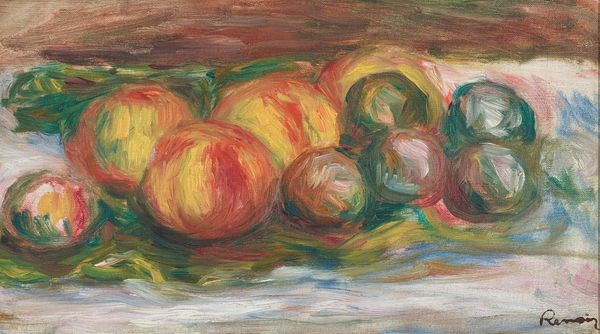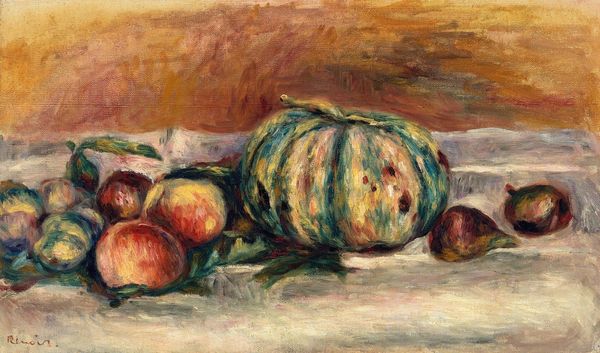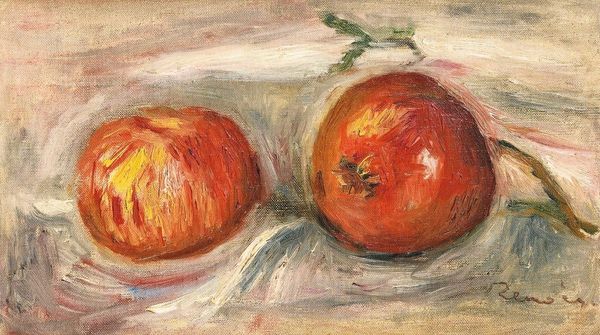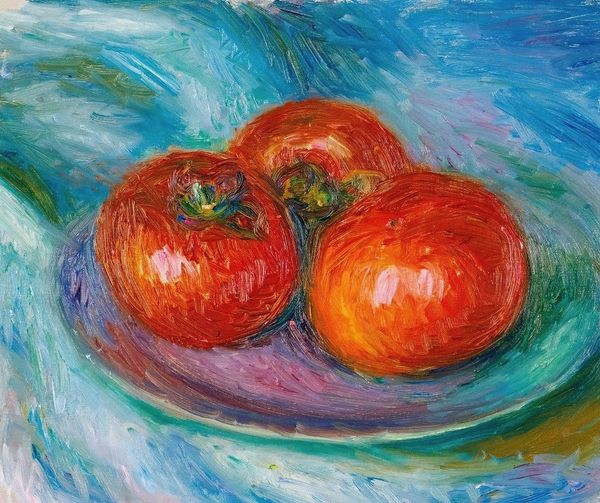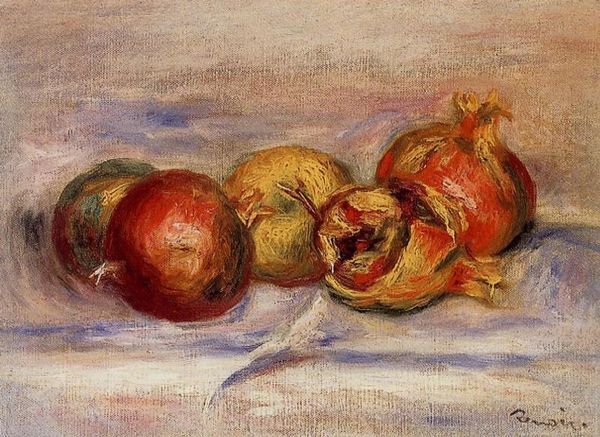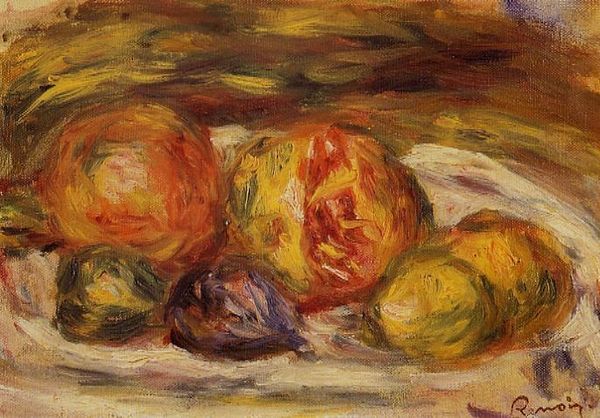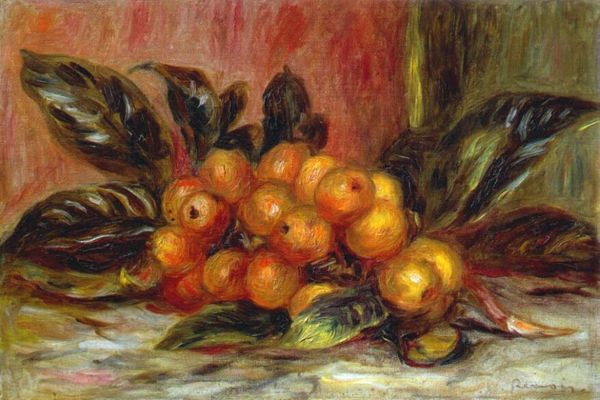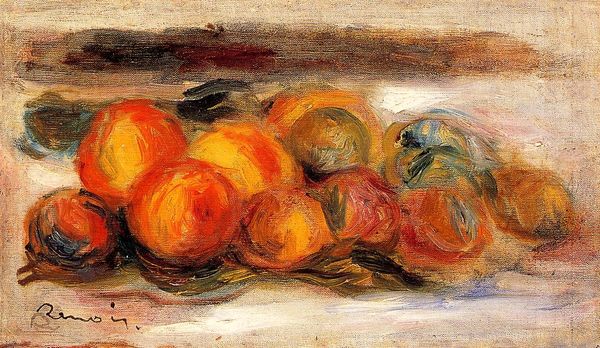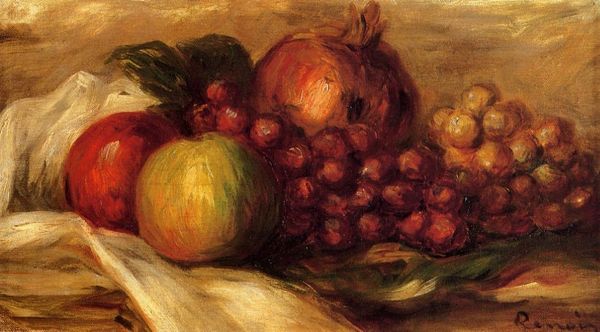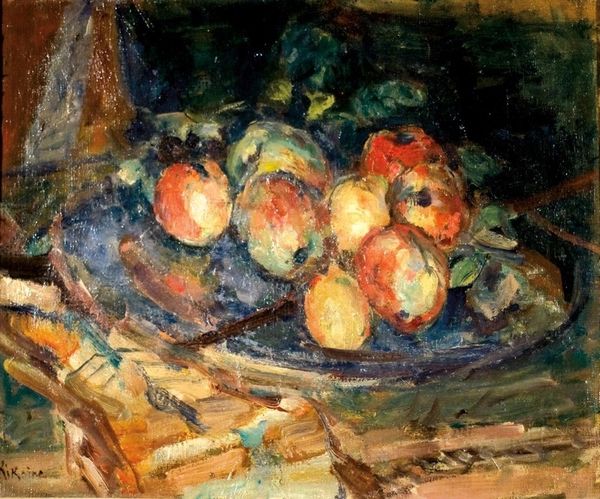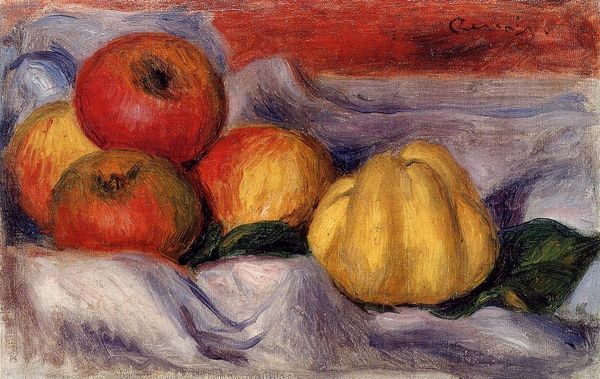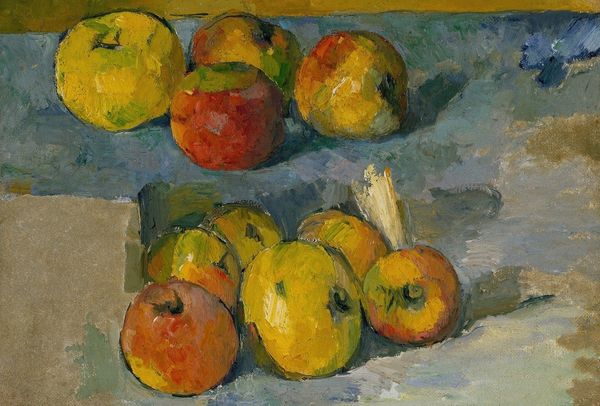
#
abstract painting
#
possibly oil pastel
#
oil painting
#
fluid art
#
acrylic on canvas
#
underpainting
#
painting painterly
#
animal drawing portrait
#
watercolour illustration
#
watercolor
Copyright: Public Domain: Artvee
Curator: Seeing this, I immediately think of a warm summer afternoon; it feels light and uncomplicated. The fruit seems so touchable! Editor: That’s an interesting reading! We're looking at Pierre-Auguste Renoir's "Apples, Orange, and Lemon," created around 1911. The accessibility and, perhaps, even the sense of safety that you’re expressing might stem from Renoir’s unique treatment of the domestic sphere, particularly in the context of early 20th-century French society. What might seem merely decorative, is, in my view, laden with societal constructs related to comfort, gender and class. Curator: I suppose I'm reacting to the composition itself and what my eyes are immediately drawn to. How he laid the objects out, and the colors! Considering Renoir's process, it's really compelling, isn’t it? The almost blurry application of paint and how he renders the various textures. I wonder how much time he spent selecting each piece of fruit and considering how their different surfaces would absorb and reflect light, and by extension communicate symbolic content, like freshness or ripeness... Editor: That brings up something interesting. Were these fruits staged still lifes intended for consumption or objects studied under a new bourgeois, consumerist society and culture? Renoir, known for his impressionistic landscapes and figure studies, often portrayed scenes of leisure and affluence. Here, his material exploration intersects with socio-economic readings that would be helpful for our visitors to keep in mind: What does it mean to own such vibrant goods, in times where class differences affected how ordinary people ate, survived and labored to afford basic survival and wellbeing? Curator: I hear what you’re saying, but, I wonder if layering that interpretation dilutes something simpler? What if this painting’s enduring power is that it acts as a form of silent protest, especially if one is considering the expectations that marginalized genders had in the public sphere around the time this piece was conceived? What if the artist is inviting marginalized people to just relish this quotidian scene and recognize the emotional complexities imbued into domestic, private environments such as that represented in the artwork. I guess it comes down to who do we presume will listen to this conversation! Editor: I would only underscore, in light of your view, that understanding production and consumption within society is pivotal when approaching Renoir’s subject matter as artworks or even sources of silent resistance. They existed at the center of the commercial exchange and societal transformation of their time, regardless of their aesthetic appearance or the artist’s intentions! Curator: Well, regardless, it seems we can both agree the artist wanted to portray a moment, no matter how simple. I think it’s quite inviting, even with such complexities. Editor: Indeed! These artworks invite us to recognize art’s role in shaping and reflecting socio-cultural attitudes to everyday life and, I believe, can reveal both power and beauty in things otherwise too often disregarded!
Comments
No comments
Be the first to comment and join the conversation on the ultimate creative platform.

